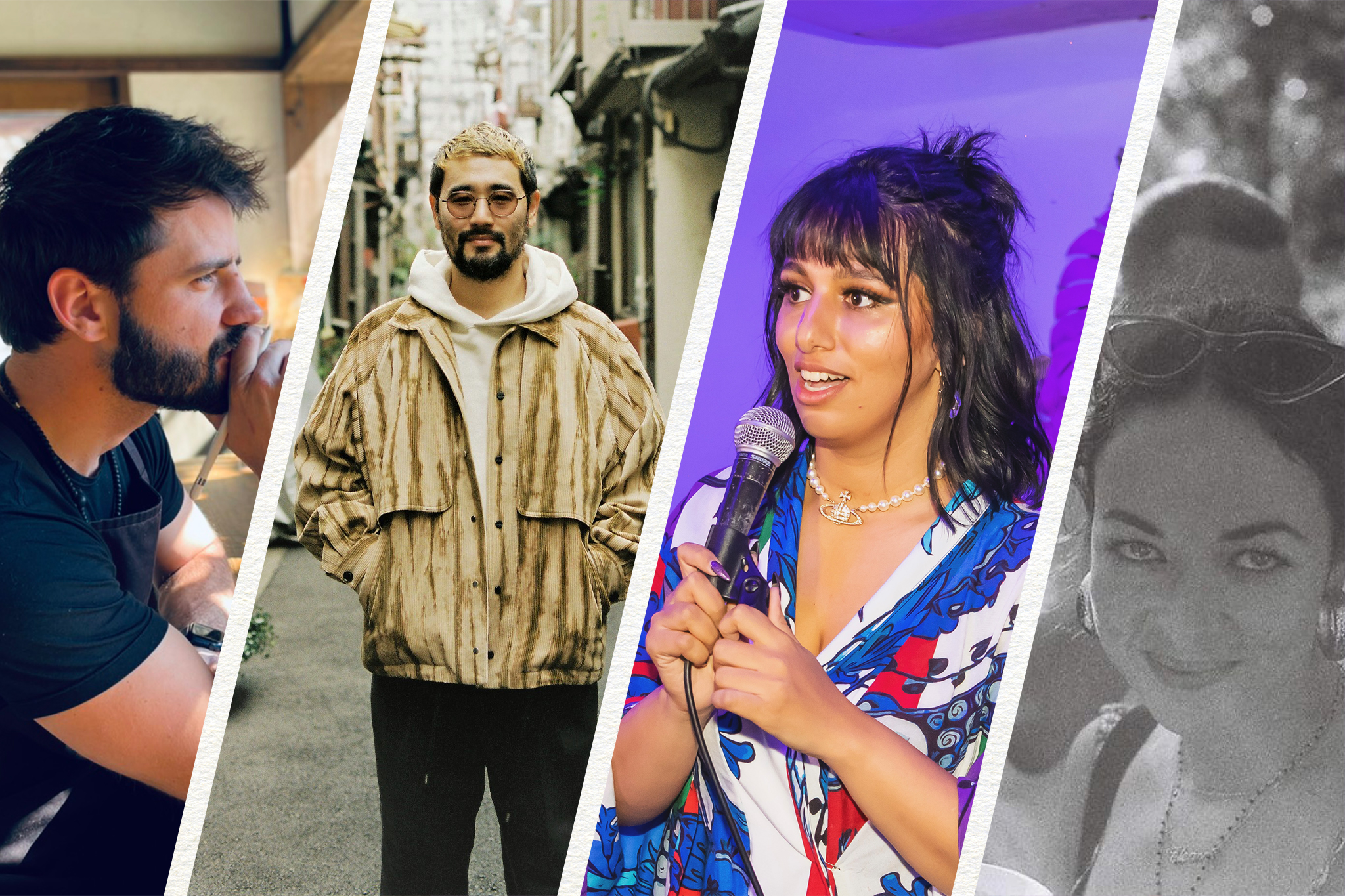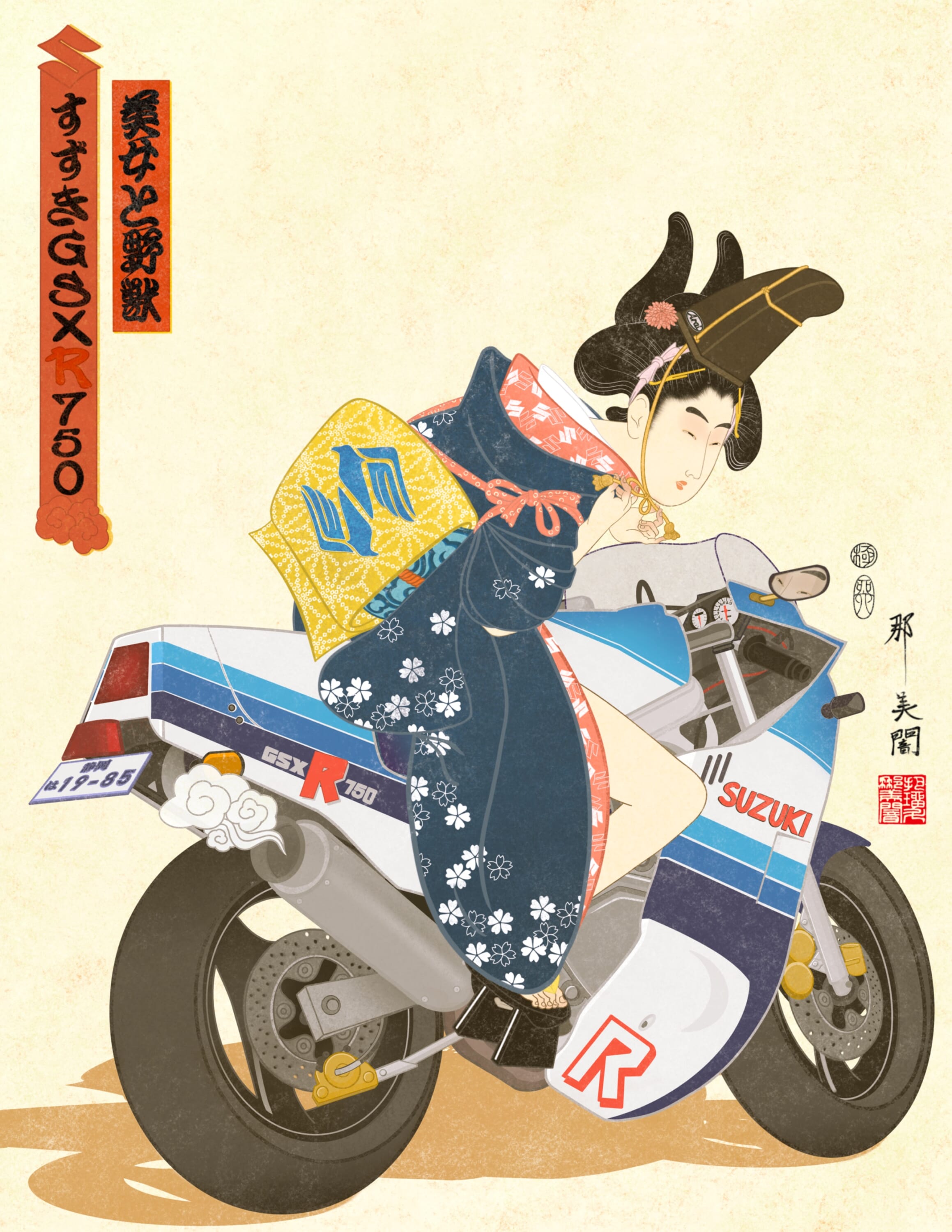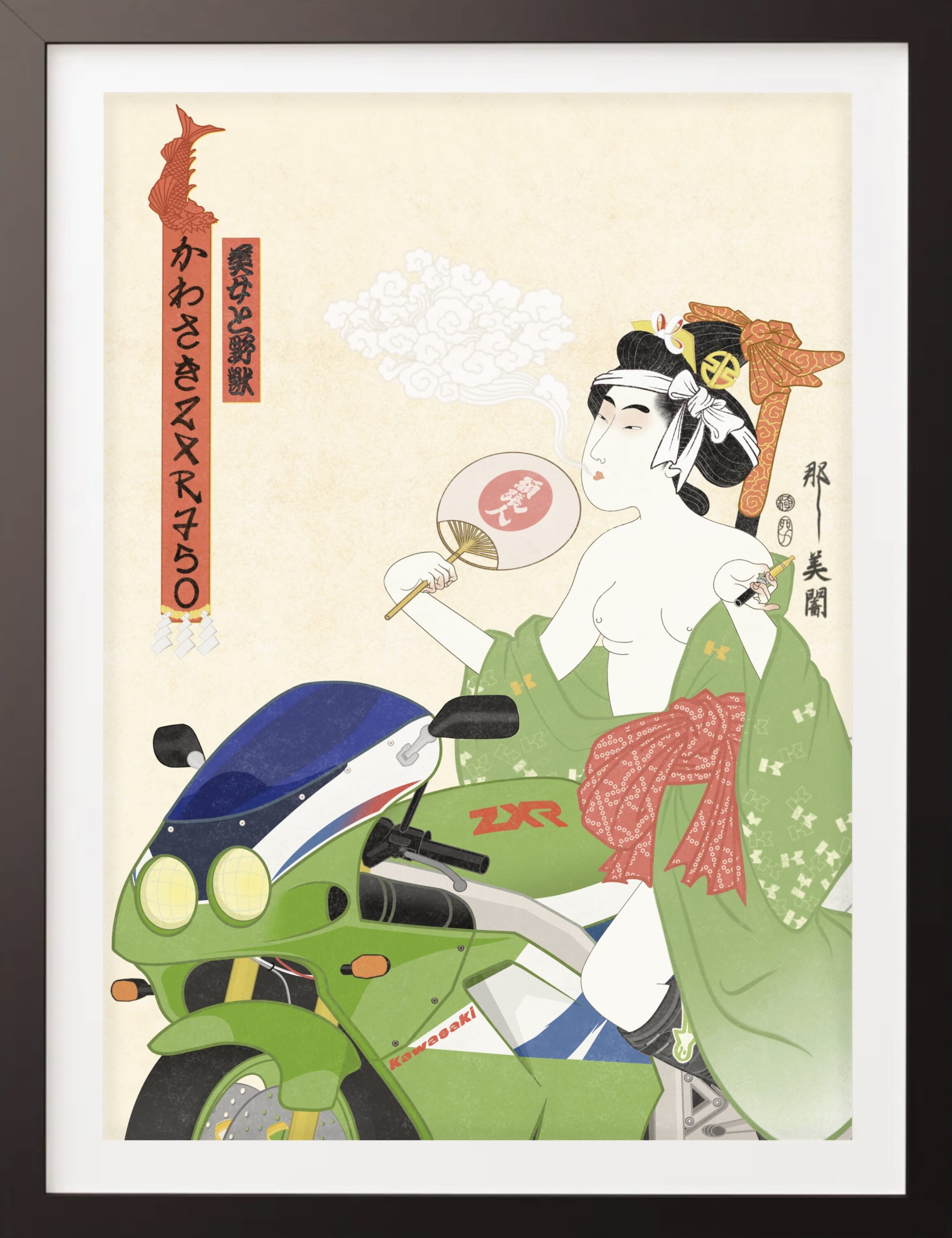The humans of Tokyo make this metropolis pulse with energy. We check in with four of the many Tokyo voices that make the cacophony a symphony.
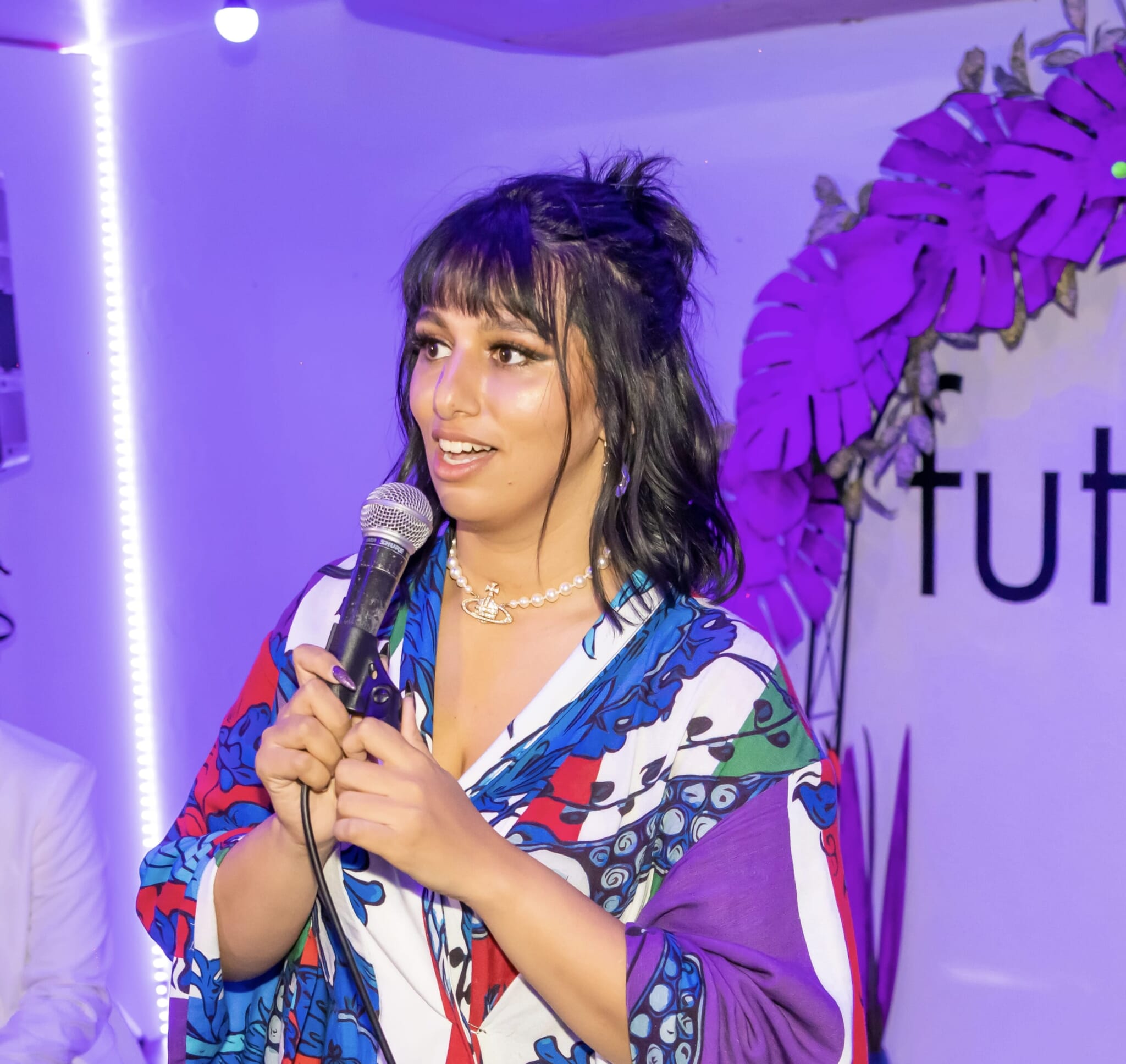
Reem Alhouwari, Architect and Community Maker
Having been accepted at the University of Tokyo, Alhouwari left Saudi Arabia for Japan intending to go to graduate school for architecture. Since coming to Japan, she has built Future Foundation, a nonprofit organization supporting Japan’s artists and creatives, as well as R., her own design studio.
What’s your current obsession?
To figure out a way to give under-represented artists and creators like myself the opportunity to rise and break the glass ceiling. We have been working on making Future Foundation a borderless digital and physical platform for artists to connect, learn, promote themselves and sell their art. In December, we will debut our online platform, jointhefuture.jp, accompanied by a spectacular launch event.
Why is Japan your forever home?
I fell in love with Japan and its Zen culture, allowing me to learn the subtle art of marrying seemingly contrasting ideas. This in turn empowers me to be a woman who takes on great challenges gracefully. If that’s not enough of a reason to fall in love with this city, the safety and security of Tokyo gives me the opportunity to heal from the past, live in the present and dream of the future.
What do you want a future Tokyo to be like?
A more inclusive, creative and diverse Tokyo.

Shinya Miyaura, Fashion Curator
Miyaura studied in Japan and London, where he rediscovered his admiration for Japanese textiles. He returned to Japan and subsequently wrote a book, organized various conferences and founded the curation project Secori Gallery and the regional textiles revitalization company Textile Japan.
What is your current obsession?
It’s visiting factories in production areas. I have been to more than 200 factories a year for over 10 years now, but there are still many factories and fabrics that I don’t know. Even if I visit the same factory, sometimes there’s a new manufacturing process to learn about.
You introduce leading fashion designers to textile manufacturing areas in Japan. What textile is the most representative of Tokyo?
I believe that’ll be a new textile that’s never existed before, created by combining the skills of many designers and craftsmen.
What is your favorite Tokyo neighborhood?
There are many, but if I must choose one, it’s Tsukishima, where I have been based for over 10 years. It’s a fusion of old and new. I like that kind of duality. If the city of Tokyo were represented by only one color, what do you feel that color would be? Can I say “marbled”? Tokyo is a city made up of a mix of cultures; it’s like countless colors mixed together.
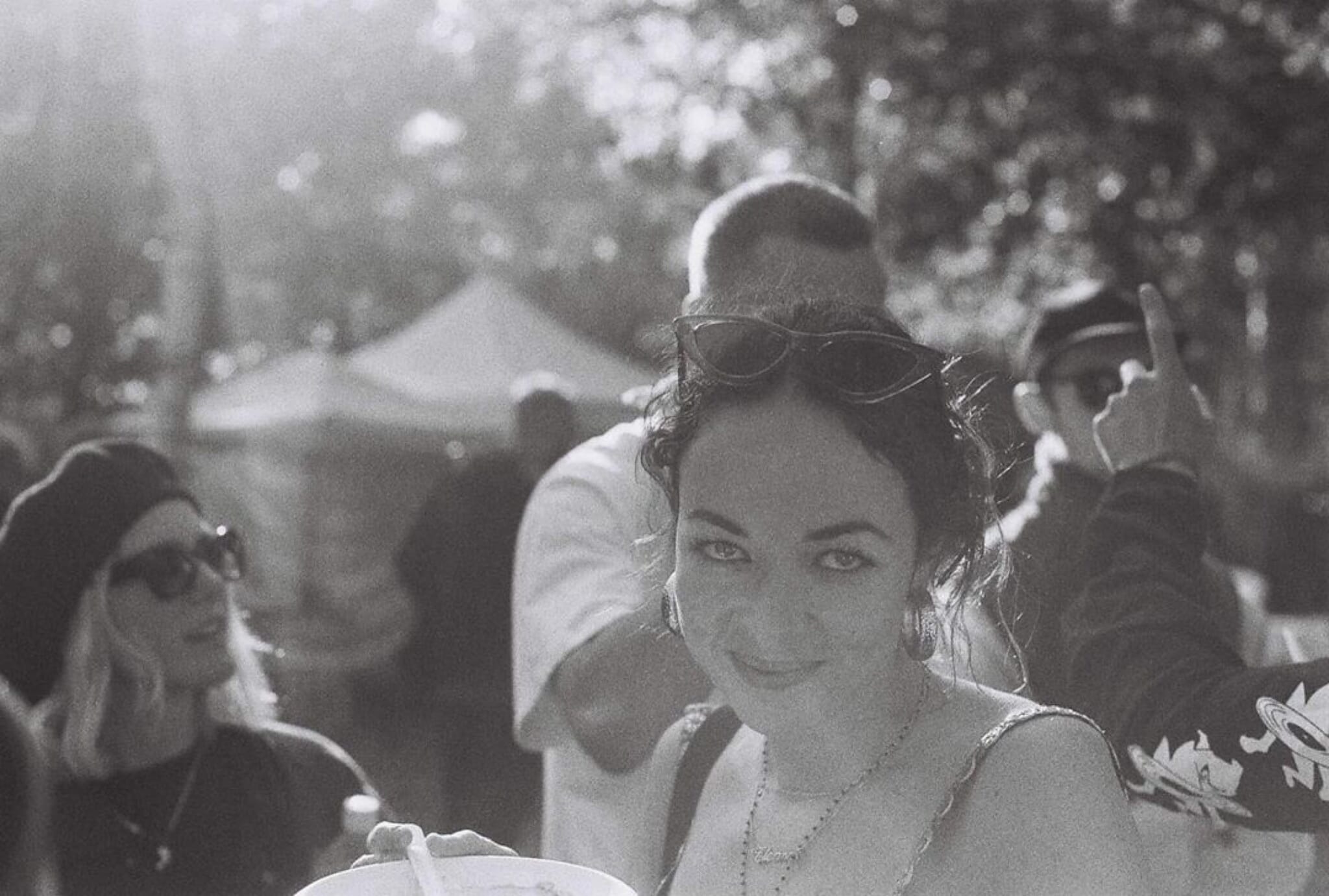
Eleanor Ford, Freelance Art Curator
A citizen of the world who has lived in France, the U.K., Singapore and Hong Kong, Ford is right at home in Tokyo, where her two main roles are working as a creative director for Haneda Airport’s arts and culture division and as an art curator, mainly for UltraSuperNew Gallery.
What is your current obsession?
Looking for emerging Japanese artists, especially those who are trying to bring awareness to challenges (political or not), as I feel there is a lack of that representation in Japan.
You worked on the “Dreaming Through the Window” installation at Haneda Airport. If people were to peek through a magical window into Tokyo, what unexpected part of Tokyo would you show them?
You can be in a modern part of Tokyo and get hurled back into the Showa era by walking into a random yokocho alley — complete with yakitori smoke wafting in the air and red-faced drunk salarymen. I love the atmosphere you never see in the daylight. Between Kichijoji and Shinjuku on the Chuo Line, every stop has its own story.
What makes Tokyo different from anywhere else you’ve lived or been?
Honestly, working here is so supportive and not a dog-eat-dog world.
If Tokyo were represented by only one word, what would it be?
Clash! Traditional and modern. Technologically advanced yet still stuck in the 1970s in some ways (fax machines!). Tokyo is a concrete jungle, but only an hour from the mountains.
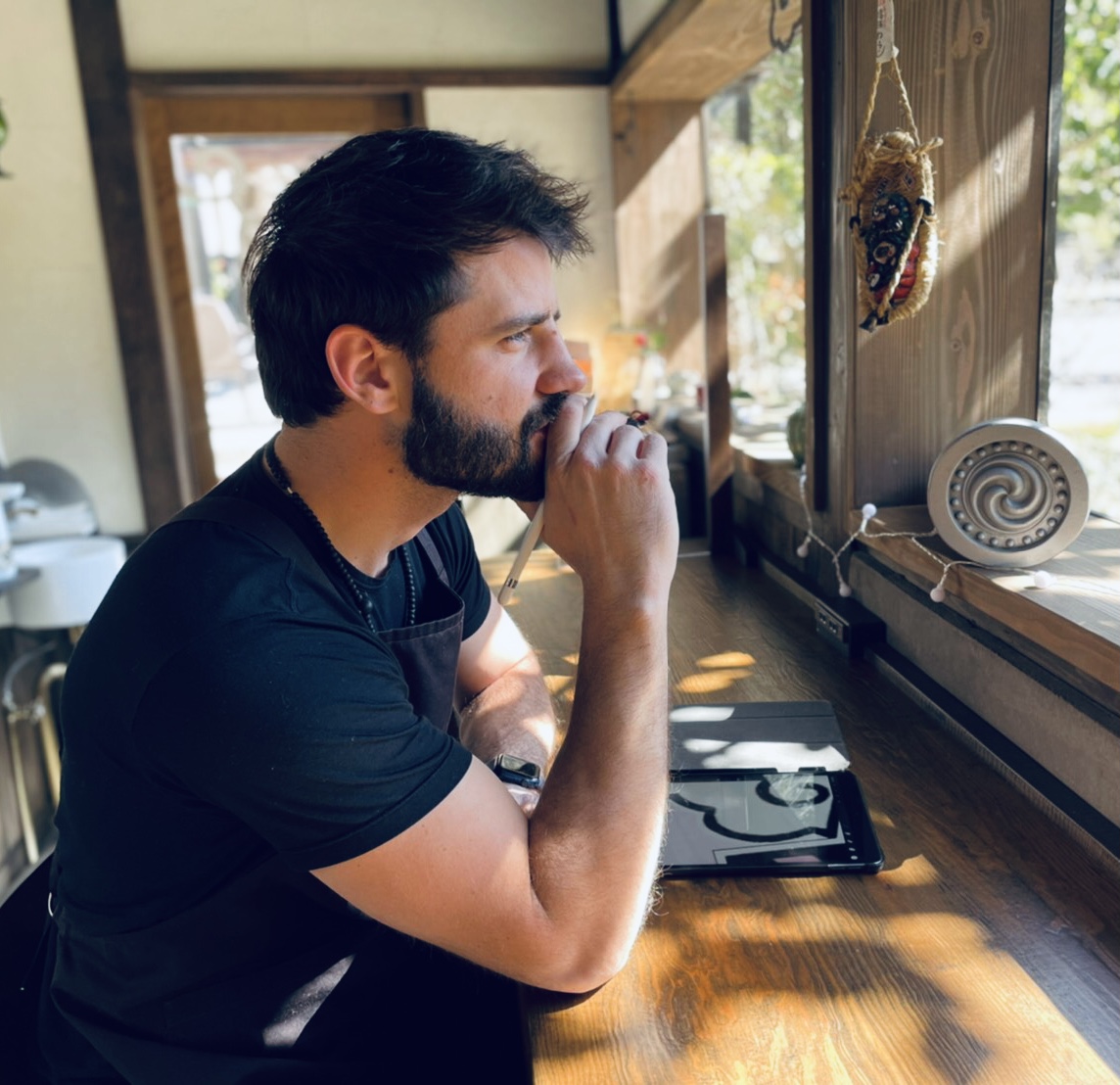
Damien Bartlakowski, Artist and Graphic Designer
Hailing from Lyon, France, this artist lived in the Netherlands and Australia before calling Japan home. He credits his international experiences as a source of inspiration for his work. Bartlakowski has cycled all over Japan and even helped with the creation of a craft beer at Kakurinbo, a temple guesthouse in Yamanashi Prefecture.
What’s your current obsession?
Ukiyo-e, bijin-ga, Japanese traditional fashion and, most recently, old Japanese motorbikes. I always enjoyed drawing cars and motorcycles as a kid, and I regained interest this year when I started my series “Beauty and the Beast,” which combines legendary motorcycles and women wearing kimonos. Recently, I undertook an exciting project for a Belgian car club exclusively dedicated to Japanese automobiles. Inspired by the project, I found my new challenge: crafting racing car liveries infused with the essence of ukiyo-e and Japanese tradition.
What’s the story behind your moniker, Ganbaruto?
I have quite a long and complicated last name, very hard for Japanese people to pronounce, so they would shorten it and call me Baruto-san. The moniker Ganbaruto is a good combination of that and ganbaru (doing your best).
What’s your favorite part of Tokyo and why?
I’m an early bird and I love old Japanese architecture, so I tend to spend a lot of time visiting temples and shrines very early in the morning when the city is still silent and peaceful. I love Asakusa, Senso-ji and wandering on the Sumida riverbanks.
This article was originally published in the TW November-December 2023 issue
Read the previous installments of TW’s Voice of Tokyo.
Updated On December 8, 2023

